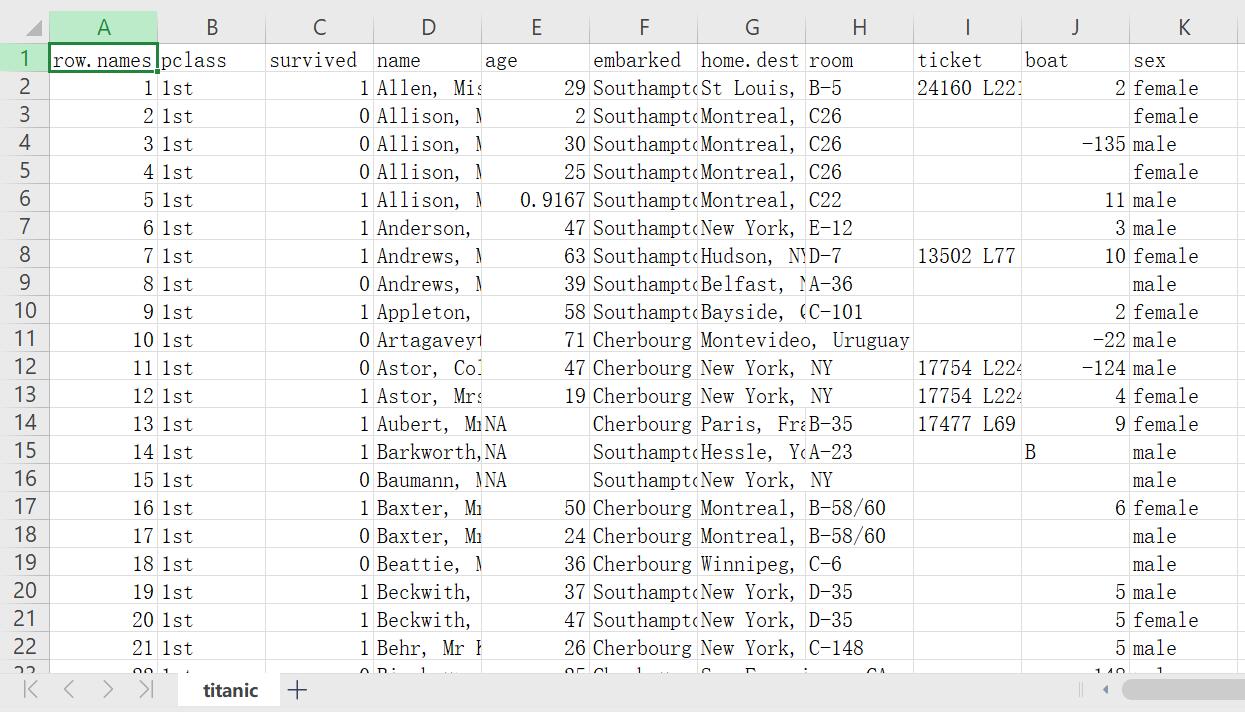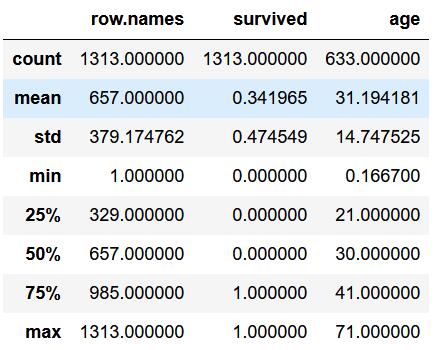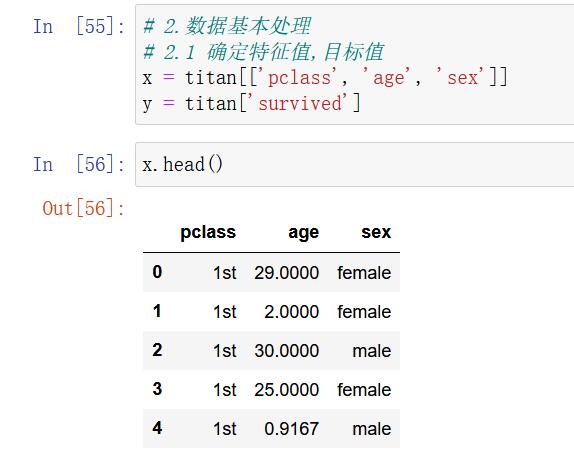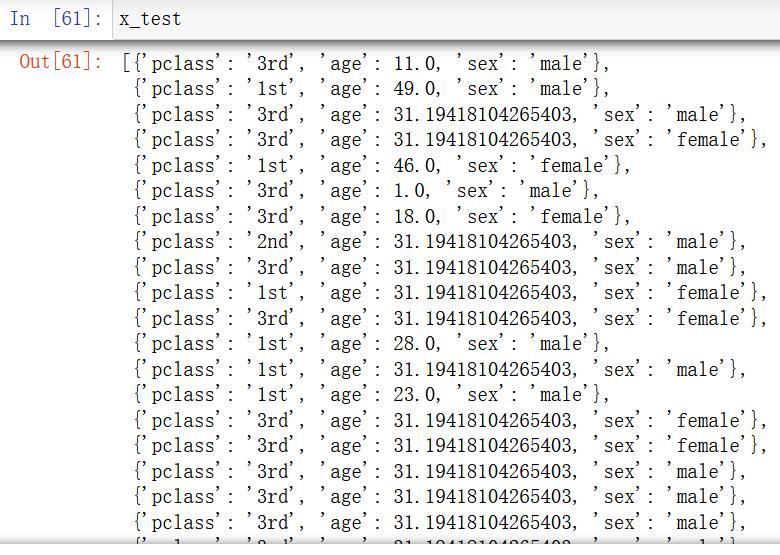泰坦尼克号乘客生存预测(XGBoost)
Posted ZSYL
tags:
篇首语:本文由小常识网(cha138.com)小编为大家整理,主要介绍了泰坦尼克号乘客生存预测(XGBoost)相关的知识,希望对你有一定的参考价值。
1. 案例背景
泰坦尼克号沉没是历史上最臭名昭着的沉船之一。1912年4月15日,在她的处女航中,泰坦尼克号在与冰山相撞后沉没,在2224名乘客和机组人员中造成1502人死亡。这场耸人听闻的悲剧震惊了国际社会,并为船舶制定了更好的安全规定。 造成海难失事的原因之一是乘客和机组人员没有足够的救生艇。尽管幸存下沉有一些运气因素,但有些人比其他人更容易生存,例如妇女,儿童和上流社会。 在这个案例中,我们要求您完成对哪些人可能存活的分析。特别是,我们要求您运用机器学习工具来预测哪些乘客幸免于悲剧。
案例:
https://www.kaggle.com/c/titanic/overview
我们提取到的数据集中的特征包括票的类别,是否存活,乘坐班次,年龄,登陆home.dest,房间,船和性别等。
这是一个常用的数据,给大家个链接,可以去该链接下载数据集:http://biostat.mc.vanderbilt.edu/wiki/pub/Main/DataSets/titanic.txt

上面数据下载可能需要外网访问,本地访问连接超时。
第二种下载数据集方式:
https://datahub.csail.mit.edu/download/jander/historic/file/titanic.csv
亲测有效

经过观察数据得到:
- 1 乘坐班是指乘客班(1,2,3),是社会经济阶层的代表。
- 2 其中age数据存在缺失。
2. 步骤分析
- 1.获取数据
- 2.数据基本处理
- 2.1 确定特征值,目标值
- 2.2 缺失值处理
- 2.3 数据集划分
- 3.特征工程(字典特征抽取)
- 4.机器学习(决策树)
- 5.模型评估
3. 代码实现
- 导入需要的模块
import pandas as pd
import numpy as np
from sklearn.feature_extraction import DictVectorizer
from sklearn.model_selection import train_test_split
from sklearn.tree import DecisionTreeClassifier, export_graphviz
- 1.获取数据
# 1、获取数据
titan = pd.read_csv("http://biostat.mc.vanderbilt.edu/wiki/pub/Main/DataSets/titanic.txt")
or
titan = pd.read_csv("./data/titanic.csv")

titan.describe()

-
2.数据基本处理
- 2.1 确定特征值,目标值
x = titan[["pclass", "age", "sex"]]
y = titan["survived"]

- 2.2 缺失值处理
# 缺失值需要处理,将特征当中有类别的这些特征进行字典特征抽取
x['age'].fillna(x['age'].mean(), inplace=True)
- 2.3 数据集划分
x_train, x_test, y_train, y_test = train_test_split(x, y, random_state=22)
- 3.特征工程(字典特征抽取)
特征中出现类别符号,需要进行one-hot编码处理(DictVectorizer)
x.to_dict(orient="records")需要将数组特征转换成字典数据
# 对于x转换成字典数据x.to_dict(orient="records")
# [{"pclass": "1st", "age": 29.00, "sex": "female"}, {}]
transfer = DictVectorizer(sparse=False)
x_train = transfer.fit_transform(x_train.to_dict(orient="records"))
x_test = transfer.fit_transform(x_test.to_dict(orient="records"))

4.xgboost模型训练和模型评估
# 模型初步训练
from xgboost import XGBClassifier
xg = XGBClassifier()
xg.fit(x_train, y_train)
xg.score(x_test, y_test)
# 针对max_depth进⾏模型调优
depth_range = range(10)
score = []
for i in depth_range:
xg = XGBClassifier(eta=1, gamma=0, max_depth=i)
xg.fit(x_train, y_train)
s = xg.score(x_test, y_test)
print(s)
score.append(s)
# 结果可视化
import matplotlib.pyplot as plt
plt.plot(depth_range, score)
plt.show()

以上是关于泰坦尼克号乘客生存预测(XGBoost)的主要内容,如果未能解决你的问题,请参考以下文章